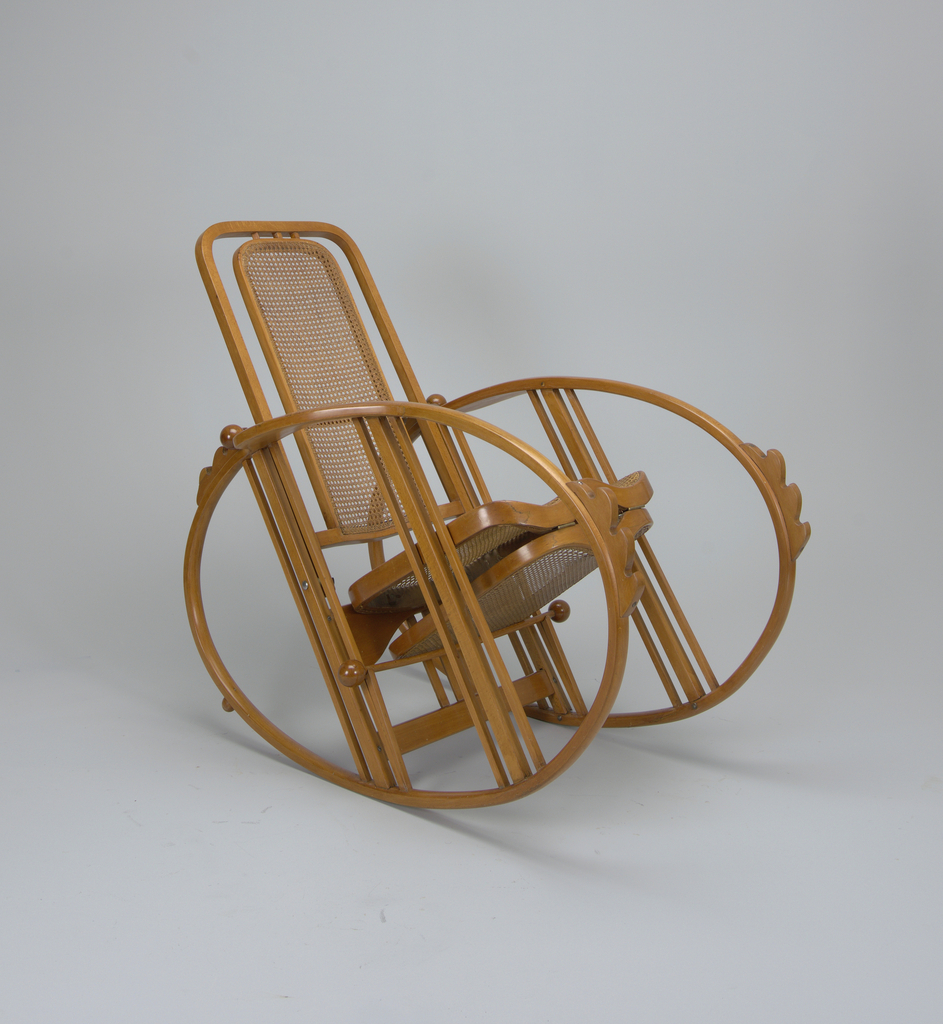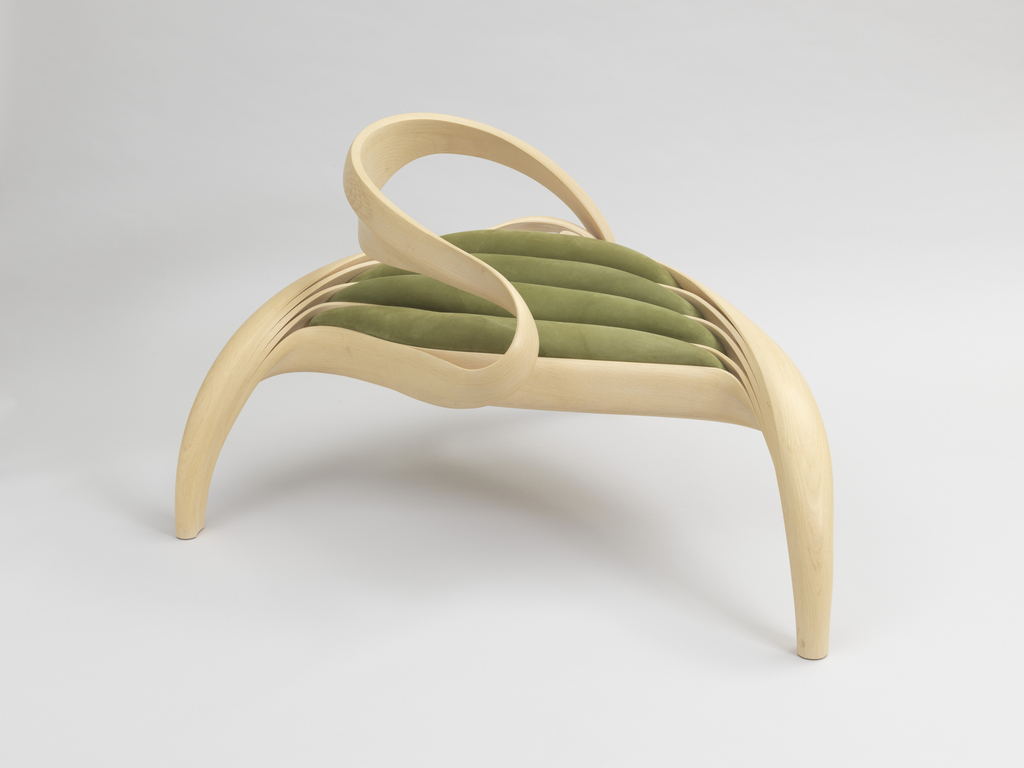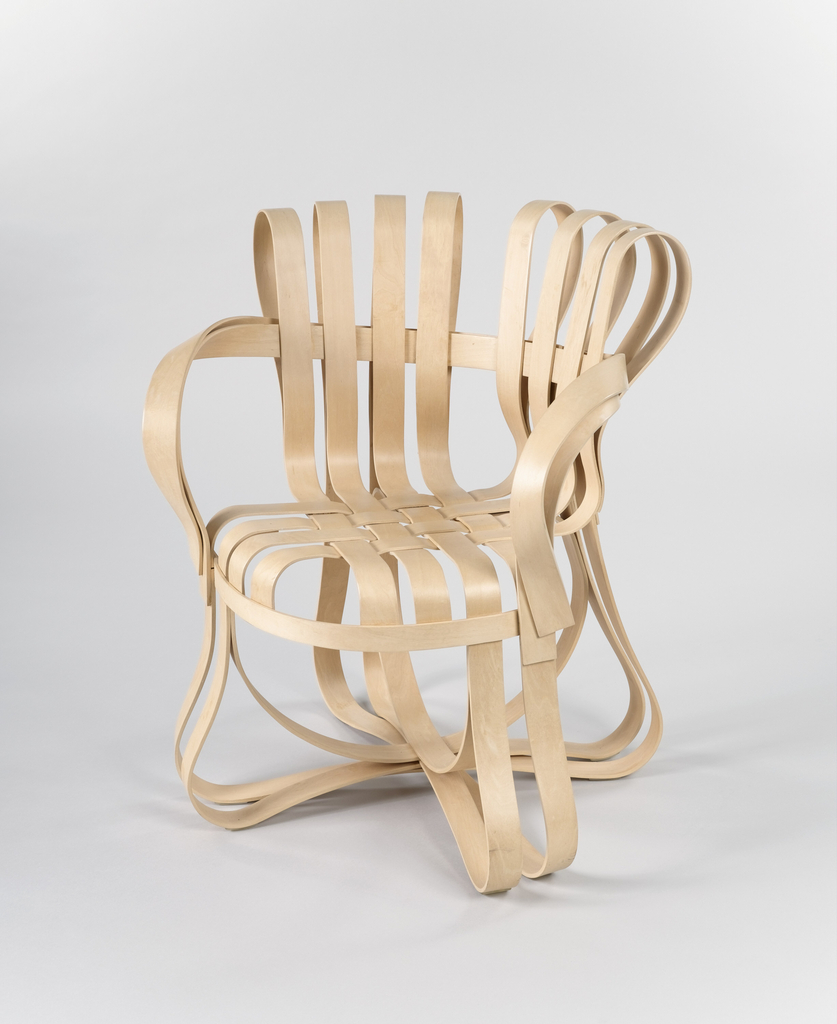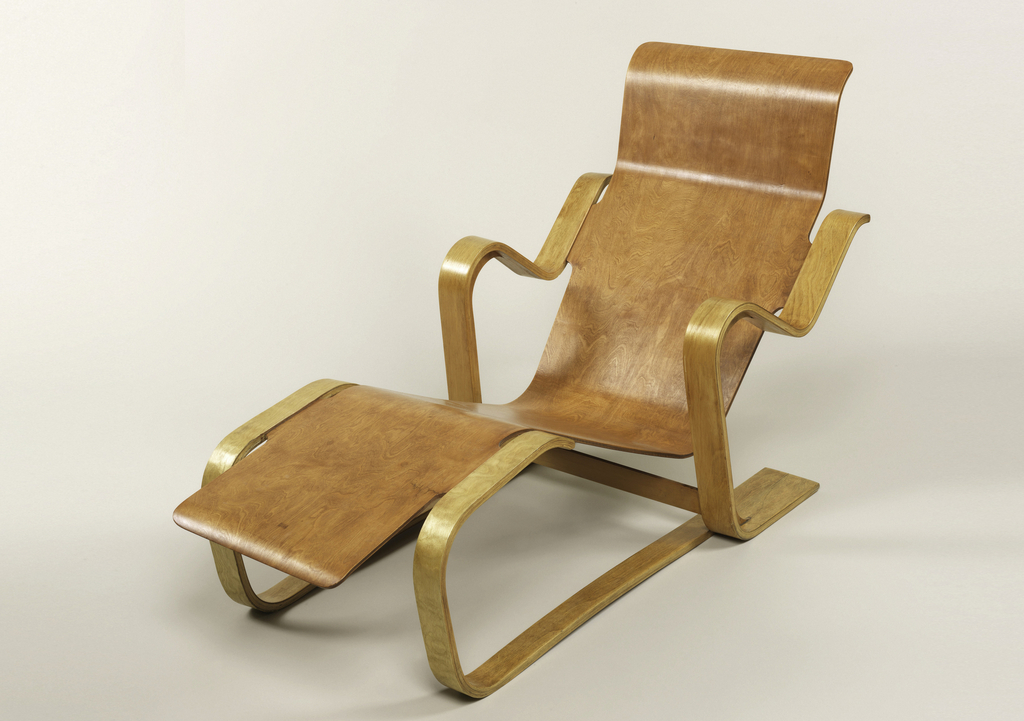Adjustable and rockable, this reclining chair exemplifies the fusion of form and function. The chair was designed by the Udinese-based firm, Società Anonima Antonio Volpe, around 1905. The firm specialized in the production of bentwood furniture for the Italian market. This type of furniture had been made popular by the Viennese firm Gebrüder Thonet, which...
The Enignum Free Form Chair by Joseph Walsh curves, swirls and ripples in a manner that is reminiscent of furniture from the Art Nouveau period, yet it is contemporary in its overall aesthetic. Joseph Walsh, a self-taught designer and builder, started working with wood at the age of eight, and honed both his woodworking skill...
The Cross Check Chair is named after a hockey infraction in which a player holds their stick vertically and blocks another player, illegally checking them. The name is also a reference to the seat of this chair, which is made out of interwoven maple plywood strips, creating a check pattern, and a double meaning of...
The Hungarian-born Marcel Breuer is perhaps best known for his tubular steel B3 (‘Wassily’) and B32 (‘Cesca’) chairs, which he designed while leading the carpentry workshop at the Bauhaus, after it moved from Weimar to Dessau, Germany, in 1925. Legend has it his experiments with tubular steel were inspired by his bicycle. Breuer, who was...
Cheryl Buckley, Professor of Design History, Northumbria University, Newcastle From the curving lines of Thonet bentwood furniture and delicate Lalique glass to sumptuous jacquard woven textiles and Japanese-influenced graphics, the late nineteenth and early twentieth centuries produced extraordinarily beautiful objects. Professor Cheryl Buckley and a panel of experts will tell the story of the turn...




